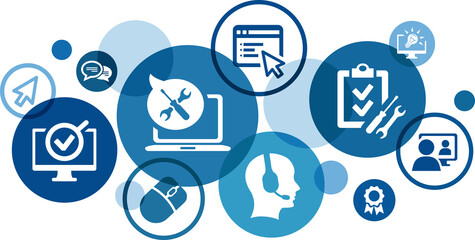As a global player, you deal with customers from all over the world, all with different cultural backgrounds. Having a thorough understanding of the cultural differences between these customers is necessary to have a good overall understanding of your customers, which in turn can lead to success in the field of customer service. A pretty important matter to discuss in further detail, so let’s dive right in.
Low- and high-context cultures
Each culture has different layers, which gives it a complex character. Culture isn’t just our language; it’s steeped in everything we do. Think of how we eat, the way we shake hands, how we celebrate our milestones - yep, culture is visible in all aspects of daily life.
It comes as no surprise that culture also plays a significant role in how we do business. As you become more aware of cultural differences in commerce, you will encounter several interesting concepts, such as low-context and high-context cultures. In low-context cultures like the United Kingdom, the United States, and Canada, communication is explicit and clear. At the other end of the spectrum, you have high-context cultures like Russia and China, where communication is more implicit and nuanced.
Cultural differences are not only about language
There isn’t just a difference in the type of communication people from different cultures prefer. They also differ in preferred channel usage. For example, US customers tend to focus on efficiency, meaning they enjoy communication via efficient channels such as Live Chat. But in the Netherlands and Germany, a big part of the customers appreciates having real conversations in a polite and friendly manner. Therefore, they would rather talk with someone on the phone than through online channels.
The same goes for expected response times: US customers like quick responses from customer service agents, while customers in the Netherlands generally don’t mind waiting a bit longer. And so, all cultures have their specific preferences. But there is at least one similarity between countries: email is the most-used channel and central point of communication between companies and customers.
How to build your customer service team
Communicating effectively with your customers starts with having team members around who genuinely understand them. As a global company, you should focus on hiring customer service employees from the same cultural backgrounds as your customer base. Having successful conversations becomes easier when people share cultural backgrounds, as conversation styles correlate more naturally.
However, the correct background isn’t the only prerequisite for a customer service agent. During the acquisition process, make sure to describe your business DNA in order to clearly show exactly what you stand for. When you’re transparent and open about your company values and goals, the right employees will be drawn to you. Those who can naturally correlate to your company DNA will more likely be able to represent you in the right way.
A people-centered culture
Strong core business values will set the foundation that brings your employees closer together. As within every culture, people can only thrive when they can be 100% themselves. In a business environment, most employees want to work with meaning and intention. This is why you need a people-centered culture within your company, where your employees’ well-being is always a top priority. Discuss how your people want to work and what motivates them, so you can embed their values into your company culture. Make sure there’s room for all different cultures within your company culture.
At weWow, we’ve built a people-centered culture where all different nationalities feel at home. We build our teams around our customers, based on their values and brand. This way, we can always be a good fit with your customer base.
Training starts with having transparent processes in place
Great customer service goes beyond hiring the right people. As a business owner, you have to understand where your customer’s questions come from and how they like to be addressed. Once you have a clear understanding of this, you can transfer this to your employees during training sessions.
At the core of a good training method are clear processes that are centered around your customer base. You don’t need a ‘one size fits all’ process, since it differs per market. To be specific: we would advise opting for 80 - 90% overlap between the different processes while you leave room for 10 - 20% to customise. Make sure that your customer-facing employees know all the ins and outs of these processes since they’re the ones who have to use them when talking to customers.
Once again: native goes beyond language
At last, we would like to underline that ‘native’ goes beyond language once more. It’s about sharing culture and really understanding each other's way of being. Take that as a starting point within customer service, and the rest will follow.






